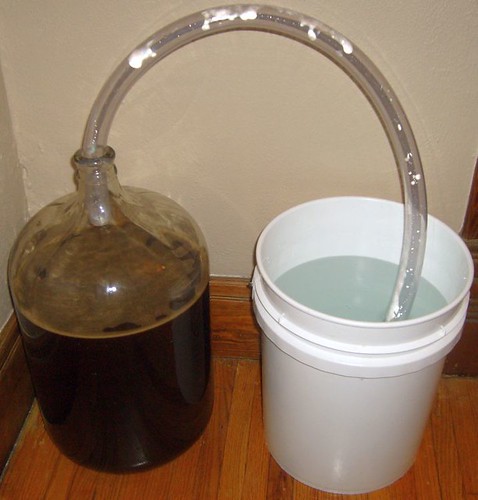Batch #003 - Old Ale Brew Day!
Saturday was the best day of the week again for us here at Tres Perros. . . BREW DAY! This time around, we are attempting and Old Ale/Stock Ale variety. It is actually an approximation of a clone of a rather popular brand of British old Ale that is rumored to not be distributed in the United States any more. The brew being cloned must stay a secret for now, (well its not really much of a secret if you do a bit of research) but eventually that fact will be revealed. But that's not important right now, what is, was that it was BEER MAKING TIME!
(Note: If anybody is interested in homebrewing, but hasnt taken the plunge yet, the following post is a pretty simple breakdown of how to make an Extract Based Brew. Its pretty simple, if you just take your time and think things through).
The first thing we did was get everything together. I am a rather scatterbrained type of guy and it really makes life easier if I keep all the materials I need to do something in close contact. The french call this mis en plas (literally "put in place"), and in cooking as well as brewing, its a good tenet to follow.: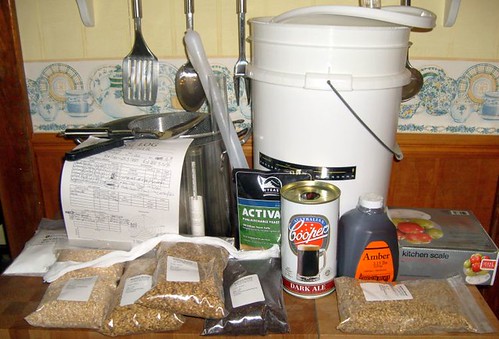
First you get together all the things you need for the boil, and then you gather everything that needs to be sanitized and do as such. Sanitation cannot be overstressed. While you are trying to grow yeast in an effort to get them to make beer for you, thats the only thing you want growing: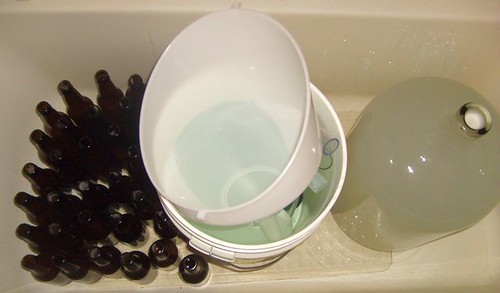
Next we weighed out all the specialty grains out to steep. Specialty grains are used by homebrewers to add color, body, taste, and aromatic properties to the beer. In fact, some styles of beer cannot be properly achieved without the help of specialty grains.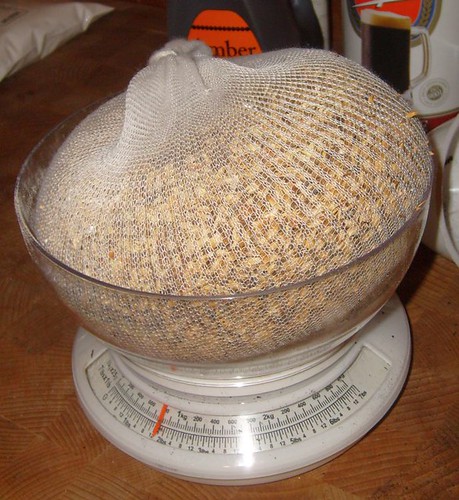
When steeping specialty grains for for an extract brew, you generally need the water between 150-170 degrees, for aat least thirty minutes. The process is much, like making a pot of grain tea: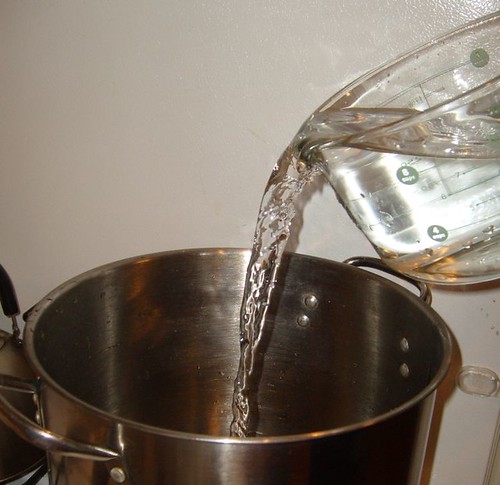
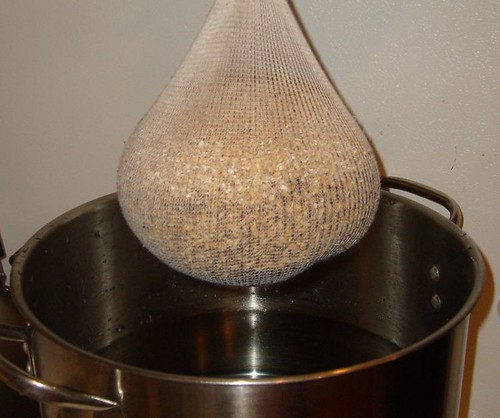
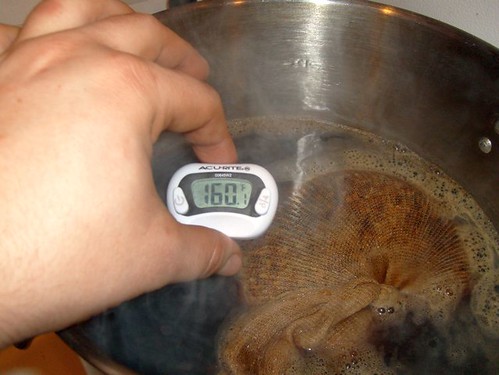

Our recipe called for a rinse at the end of the steeping cycle. In another pot we had more water heated to 175 degrees, which we ran through the sack of grain to get all the goodness out: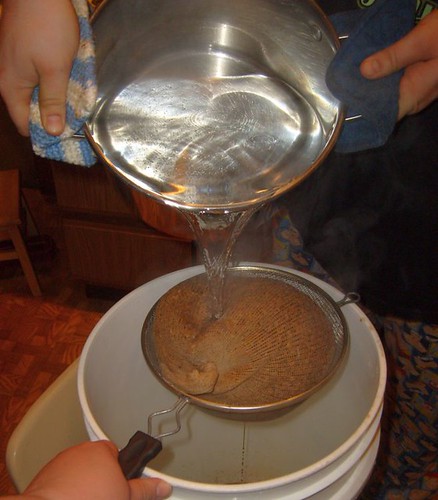
When thoroughly rinsed out, you pour all the water back int he pot and bring it to a boil. When the boil is good and rolling, there are Malt and Hop Pellet additions to be made at regular intervals. In our recipe the boil lasted for a full hour: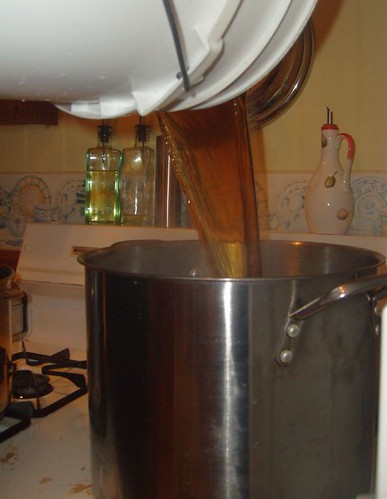
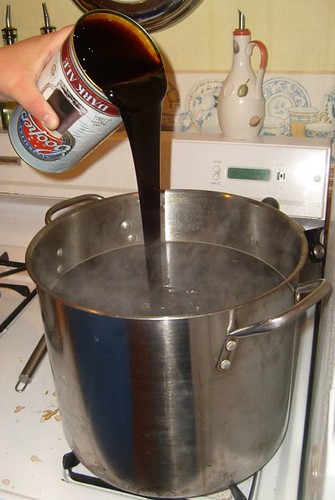
(Our Old Ale recipe included a can of Coopers Dark Ale extract. This can be used to make a pretty decent beer on its own, but with a little tweaking seems to make a decent base to build upon, for a good beer. We added it into the pot at the very beginning of the 60 min boil).
(In all the brews I have made to date, I have used hop pellets, as they seem to be the most convenient to use and store. In this case, Willamette hops are added for bittering at the 45 minute mark).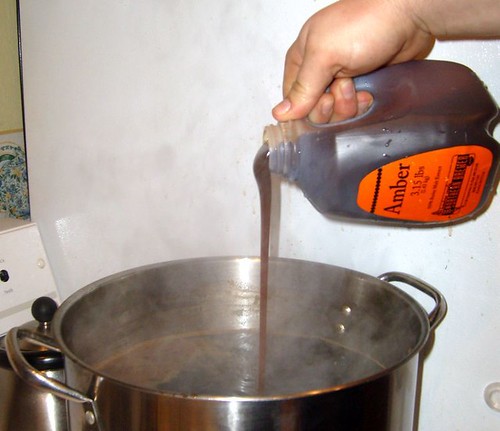
In batches of beer that boil a volume smaller than the total volume, it can be beneficial to only add some of the malt extract at the beginning of the boil. Adding some of the malt toward the end of the boil accomplishes a few things. First, because the malt spends less time over the burner its less likely to scorch or discolor. also, there is some evidence to suggest it helps you utilize hops more efficiently. We added the unhopped amber extract with 15 minutes remaining in the boil. 
A quick addition of Perle Hops with 2 minutes to go and the boil is done!
All thats left is to strain and cool the wort, add some yeast, and you are ready to go!
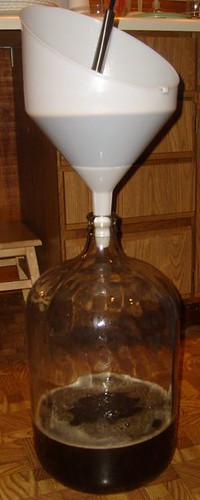
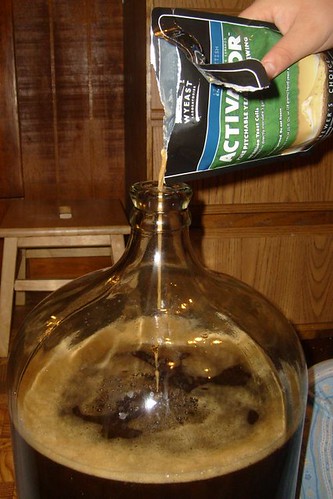
Now, as usual, the tough part. The waiting. . .